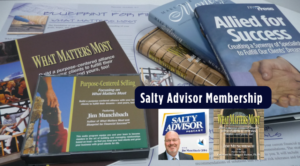Credit cards present plenty of personal finance and lifestyle perks—you can build up your credit, have a spending safety net, and sometimes, you can even access cardholder benefits, like flight miles, discounted shopping, and concierge services. But with all of the potentially positive aspects of becoming a cardholder, there’s also room for your finances to get…complicated.
According to Debt.org, the typical American holds four credit cards, and individual households carry an average balance of $8,398 in credit card debt. For many people, this balance can be pretty challenging to pay off, especially if you find yourself in a (seemingly) never-ending cycle of revolving debt. So, how do you put a stop to the cycle?

In this post, we’ll go over four strategies you can employ to find credit card debt relief, we’ll review their benefits and drawbacks, and help you compare your options to find the best solution for your situation.
For details on a specific debt relief method use the links below to jump ahead, or read all the way through to get a more in-depth overview of how to get help with credit card debt.
- What is Debt Relief?
- Should You Seek Debt Relief Options?
- Credit Card Debt Relief Strategies
- Other Debt Management Tips
- Key Takeaways
What is Debt Relief?
Debt relief is a series of strategies used to help individuals cope with debt. The goal of debt relief is to give indebted individuals some breathing room to repay their creditors, whether that’s by extending the length of a loan, reducing interest rates, settling the debt for less money than originally owed, or partially or fully absolving debts through bankruptcy.
Of course, using these debt relief methods can have a major impact on your financial future, sometimes for better, sometimes for worse. We’ll discuss these options and their associated risks and benefits a little later on in this post.
Should You Seek Debt Relief Options?
Before we jump into debt relief practices, it’s a good idea to take a closer look at your finances to see if you need to take measures toward debt relief, and what level of action makes the most sense for your circumstances.
You may be able to handle debt independently if:
- You can reasonably repay your current debts within five years. You may not need to take debt relief action beyond budgeting, by coordinating with your debt collectors, and by managing your other lines of credit.
For details on DIY debt management, check out our post on debt payoff methods.
You might consider debt relief services if:
- You’re dealing with substantial credit card debt, and are struggling to work out a repayment solution with your creditors. In that case, you may want to look toward more aggressive approaches to find debt relief. These methods can range from credit counseling to bankruptcy filing, depending on your circumstances and preferences.
Bottom Line: If you’re finding it hard to manage your credit card debt, it’s probably time to get help in whatever capacity makes sense for your personal finances. For more serious debt, using debt relief measures may be a suitable option.

Credit Card Debt Relief Strategies
If you do decide that you want to move forward with debt relief, you’ll want to take a close look at your options within the context of your own finances. Depending on the size of your debt, your other financial obligations, and your income, one situation will probably make much more sense than the other; it just comes down to understanding the basics and weighing their associated pros and cons.
With that said, let’s take a closer look at some of the debt relief options you may have access to.

Debt Management Plan
A debt management plan (DMP) is a program wherein a debt relief company negotiates with creditors on your behalf to agree on a repayment plan to help you resolve your debt. Typically, the two parties come to an agreement to reduce monthly payments, lower interest rates, minimize or waive penalties, or apply some combination of these measures. If agreed upon, you would then make monthly deposits to your credit counseling organization who would facilitate the payments on your behalf. A debt management plan usually gives the indebted party 3-5 years to pay off the balance.
Advantages of debt management plans:
- Simplifies your budget and makes paying off debt more manageable
- Can help you keep organized and on top of bills and deadlines, which can work to improve your credit
- Settling on a plan can reduce or eliminate contact from debt collectors
Risks of debt management plans:
- You may not be able to apply for any additional lines of credits while you’re enrolled in a debt management plan.
- If you make late payments while on a DMP, you may fall back into a cycle of debt, and end up in a worse situation.
What to know about debt management plans
Once you’ve considered the pros and cons of how a debt management plan could work for your finances, you can seek the help of a credit counselor to help you get started. If you and your credit counselor have successfully negotiated a debt management plan with your creditor(s), consider these best practices to keep your outstanding debt in check:
- Mark down which debts are on a DMP and which ones are not. This will help you better manage your monthly bills and keep track of where your payments are going.
- Make sure to pay monthly deposits to your credit counseling agency on-time—there’s no need to put additional stress on your finances!
- Coordinate with your credit counselor to make sure that your debt payments are being made accurately and punctually. Ask for monthly statements to help you verify and keep track of your balances. Not all credit counseling services are created equal so do your due diligence prior to signing up.

Debt Consolidation
Debt consolidation allows those who are in debt to combine several outstanding, unsecured debts into a single new loan to be paid off, ideally with a lower interest rate than what you were paying beforehand. Basically, you would open a new loan to pay off your other unsecured debts, such as credit card balances.
For example, let’s say you had four credit cards that you owed a balance on, each with an interest rate around 20%. By consolidating your debt, you could apply for a new loan in order to pay off those four credit cards. Once those cards are paid off, you’re left with just your consolidation loan with an interest rate of 18% (the average rate for a debt consolidation loan is 18.56%). In this example, debt consolidation may make it slightly more manageable for you to make your monthly payments, given that your interest rate is lower and you have only one loan to make payments to, rather than four separate credit card bills to worry about.
Advantages of debt consolidation:
- You may be able to qualify for a lower interest rate.
- You can streamline your bill payments for easier personal finance management.
- You can work on improving your credit by making more feasible monthly payments.
- Conversely, missing or making late payments can hurt your credit score.
Risks of debt consolidation:
- Combining your debt could mean that you’ll be in debt for a longer period of time, albeit with a lower interest rate.
- Paying a lower interest rate for longer could result in more money paid out in the end.
- Your consolidation loan interest rate could change, depending on your loan agreement.
- If it’s a fixed rate, it won’t change, but variable rates may fluctuate.
- Note: There are significant differences between consolidating to a personal loan and another credit card. If you are consolidating to a loan then the term would likely be shorter than on a credit card and monthly payments could be higher. Also, now credit scores are hurt even more when individuals consolidate to a personal loan and then build a CC balance again, which could result in a major credit score deduction.
What to know about consolidating debt
If debt consolidation sounds like it’s the best debt relief method for your situation, keep these tips in mind:
- If you’re struggling to make monthly payments on your current credit card bills, you’ll likely be better off consolidating your debts than skipping payments. Skipping payments can incur financial penalties and negatively impact your credit score.
- Once you’ve consolidated, make it a priority to submit payments that are on-time and accurate.
- To prioritize your debt payments, start by calculating your budget, and make adjustments as necessary.

Debt Settlement
Debt settlement is a credit card relief strategy that aims to resolve debt for less than the total balance owed, as agreed upon by the creditor. Once a settlement agreement is made, the indebted party typically must make a lump-sum payment to resolve the total balance due. Consumers can attempt to make a debt settlement on their own, or with the help of a debt settlement firm.
Note: If you hire a debt settlement firm, keep in mind that you’ll need to account for fees owed to the firm.
Advantages of debt settlement:
- You can minimize the amount of debt you owe.
- By paying off the remaining balance as a lump-sum payment, you can eliminate your debt at once, rather than over a long period of time
- Debt settlement is one of the most affordable debt relief methods when considering service fees.
- Settling a debt for less than the original amount owed may negatively impact your credit score.
- A lower credit score may in turn affect your eligibility for loans and other lines of credit later on down the road.
- Settling debt can have a big impact on your income taxes. Because the IRS classifies forgiven debt as income, the amount will still be factored into your annual gross income. In general, the higher your income, the more taxes you’ll owe.
- Hiring a debt settlement firm tacks on extra bills to your budget, which can make it hard to completely resolve your debts.
What to know about settling debt
The FTC warns consumers to do their research on debt settlement programs before enrolling. Contact your state Attorney General’s office or local consumer protection agency to find out if there are any consumer complaints on file with the debt relief firm you’re thinking about working with.
Additionally, consumers should be aware of debt settlement scams and avoid working with a firm that:
- Charges any fees before it settles your debts
- Touts a “new government program” to bail out personal credit card debt
- Guarantees it can make your unsecured debt go away
- Tells you to stop communicating with your creditors, but doesn’t explain the serious consequences
- Promises to stop all debt collection calls and lawsuits
- Ensures that your unsecured debts can be paid off for pennies on the dollar

Bankruptcy
Bankruptcy is a federal court proceeding that grants consumers the chance to “start fresh” with their finances by forgiving debts that cannot be paid. Instead of settling the balance owed, creditors can seek some level of repayment by seizing the individual’s personal or business assets.
Consumers filing for bankruptcy will typically file for Chapter 7, 11, or 13 bankruptcy:
- Chapter 7: Offers debt forgiveness in exchange for ownership over certain assets held by the consumer or their business. High-value possessions, property, cash, stocks, or bonds must be liquidated in order to repay a portion or the entirety of the debt owed.
- Chapter 11: Allows businesses to reorganize, revamp business plans, cut expenses, and focus on boosting profits to eventually reinstate their profitability. Some Chapter 11 proceedings will require a business to enroll in a debt repayment plan to handle outstanding debts. Typically, Chapter 11 bankruptcy is used for businesses, but in rare cases, can be filed on behalf of an individual.
- Chapter 13: When an individual earns too much money to qualify for Chapter 7 bankruptcy, they will generally opt for Chapter 13. This form of debt relief allows both businesses and individual consumers to obtain a practical debt repayment plan without losing ownership over their respective assets.
Advantages of bankruptcy:
- Bankruptcy gives you the opportunity to clear debts from your record, allowing you to hit something of a “refresh button” on your finances.
- Depending on what type of bankruptcy you file for, you may be able to resolve your debts while still maintaining some or all of your assets.
Risks of bankruptcy:
- Bankruptcy can have a substantial impact on your credit score, making it more difficult to apply for new lines of credit, embark on business ventures, or be approved for a loan in the future.
- Chapter 7 bankruptcy will appear on your credit report for ten years and Chapter 13 will remain there for seven years.

Other Debt Management Tips
With the U.S. household debt on a continuous climb, many Americans are looking for ways to take control over their finances. After all, managing debt can be one of the most challenging financial obstacles to overcome.
As you weigh your debt relief options, keep these general debt management tips in mind:
- Compare several debt payoff methods that could work for your situation. Two of the most common approaches include:
- Snowball: Paying off the smallest balances first.
- Avalanche: Paying off debts with highest interest rates first.
- Try to keep your debt-to-income ratio below 36%.
- To calculate DTI: (total monthly debt payments ÷ monthly gross income) ✕ 100 = DTI%
- Consider setting up automatic payments for all outstanding credit card and loan accounts so that you don’t miss payments.
- Use your budget as a tool to help you free yourself from debt and work toward a more fulfilling financial future.
Key Takeaways
Credit cards can be a useful financial tool for those looking to build their credit, reap special rewards, and gain a sense of financial independence. However, it’s essential to understand how credit card debt can impact your financial situation. By implementing responsible spending habits, using your budget to monitor debt and financial wellness, and learning about your debt relief options, you’ll be well on your way toward debt-free living.
With the help of Mint, you can gain important insight on the current state of your finances, and plan for the future. Click here to learn more about how Mint can help you reach your goals.




